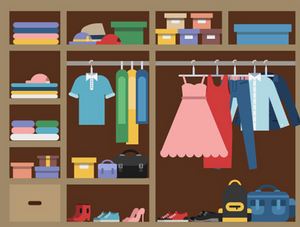A stylish, space-saving cupboard or sliding door wardrobe can instantly transform a bedroom but only if it’s assembled correctly. Whether you’ve ordered a two-door wardrobe or a large three- or four-door sliding system from Sliding Door Wardrobe, improper assembly can turn your purchase into a source of frustration, damage, or even danger. Sliding Door Wardrobe offers a wide range of wardrobes and bedroom furniture designed for modern homes, and taking care during assembly will protect your investment.
Below we explain the five most common mistakes homeowners make during cupboard assembly and exactly how to avoid them.
1. Skipping the Instructions (or Misreading Them)
Even experienced DIYers can be tripped up by flat-pack instructions. Many cupboard systems, especially collection of sliding door wardrobes include parts that look similar but are purposely different (top rails, bottom tracks, mirrored panels, internal fittings). Skipping steps or assuming parts are interchangeable often leads to doors that don’t slide correctly, misaligned panels, or parts that have to be disassembled and reassembled again.
How to avoid it: Read the full manual before you start. Lay out every component and compare against the parts list. Mark or group parts that look alike so you don’t mix them up mid-build. If any part looks different from the diagram, stop and double-check. Forcing a piece usually causes damage.
2. Using Improper Tools (or Not Enough Tools)
Trying to assemble with a single screwdriver and guesswork is a recipe for stripped screws, damaged fittings, and scratched surfaces. Sliding door wardrobes need precise screw torque, correct drivers, and sometimes power tools for pilot holes or heavy fittings. Using the wrong bit might round off screw heads or damage fasteners.
How to avoid it: Assemble with a basic toolkit that includes an adjustable spanner. A set of screwdrivers (flat and Phillips), an Allen key set, a spirit level, a rubber mallet, and, where appropriate, a cordless drill with torque control. If a manual lists a special tool, use it. It’s obviously there for a reason.
3. Rushing the Job
Hurrying through assembly to “get it done” often creates problems that take longer to fix later. Rushed assembly causes misaligned rails, uneven shelving, and damaged panels. Sliding doors in particular need patience when fitting rollers and aligning tracks a misaligned top rail will cause sticking or noisy doors.
How to avoid it: Block out enough time. Break the work into stages: unpack and inspect, prepare the area, assemble base panels, fit internal fixings, and finally mount the doors and trims. Double-check alignment before fully tightening fasteners. If it’s getting late, stop and resume with fresh eyes.
4. Assembling on an Unsuitable Surface
Building a cupboard on a carpeted or uneven floor might seem easier but can cause permanent alignment issues when the unit is stood upright. Panels can warp slightly during assembly if they’re not supported correctly, so once upright the doors and drawers won’t line up. You also risk scratching the wardrobe or your floor during movement.
How to avoid it: Prepare a clean, flat, and cushioned workspace, ideally using blankets or cardboard to protect both the wardrobe and your floor. Keep the area clear of clutter so small fittings don’t get lost. If you don’t have the room to assemble fully, assemble only what’s necessary then finish the final fittings in the placement location.
5. Skipping Safety and Stability Checks
Many flat-pack wardrobes require wall-fixing brackets or anti-tip straps especially tall or heavy units. Ignoring these safety steps increases the risk of tipping if the cupboard is overloaded or bumped. Additionally, failing to check door operation and internal fittings can lead to wear and tear that shortens the life of the furniture.
How to avoid it: Always install anti-tip brackets where provided and anchor large cupboards to a stud or solid wall when instructed. Use a spirit level to ensure the unit sits plumb and square. Test each drawer and sliding door multiple times to confirm smooth operation. If the doors bind, loosen and adjust rather than forcing them.
Bonus tips for sliding door wardrobes
Because sliding door systems have rails, rollers and often mirrored panels, they need special care:
-
Fit rails level and square even a small twist affects door travel.
-
Adjust rollers gradually and test movement frequently.
-
Protect mirror or glass panels by keeping them on soft surfaces and handling with care.
-
Keep the track clear of debris for long life.
If you purchased from Sliding Door Wardrobe, follow the product notes and care instructions for the specific model. We list options across a broad collection of wardrobes and finishes.
When to call in the professionals
Some wardrobes are straightforward; others, especially large sliding systems with integrated lighting or mirrored panels, are trickier. If you’re unsure, or if the wardrobe is being fitted to alcoves, around skirting or into a tight space, professional installation saves you time and prevents costly mistakes. Many retailers (including specialist wardrobe retailers) offer assembly or installation services — a small fee up front often prevents bigger repair costs later. If you’d rather not DIY, booking a trained installer ensures your wardrobe is safe, level, and working exactly as designed.
Final thoughts
A beautiful cupboard is an investment in your home, don’t let common assembly mistakes spoil it. Reading instructions carefully, using the right tools, working patiently on a suitable surface, and always checking safety anchoring will protect your cupboard’s function and appearance for years. Professional assembly is a wise, cost-effective choice for your complex sliding door wardrobes.
If you ordered your wardrobe from Sliding Door Wardrobe, check the model’s instructions, look over the parts list before starting, and consider professional fitting if the installation involves tracks, mirrors, or wall fixing. Visit their collections to find the right wardrobe for your home.




